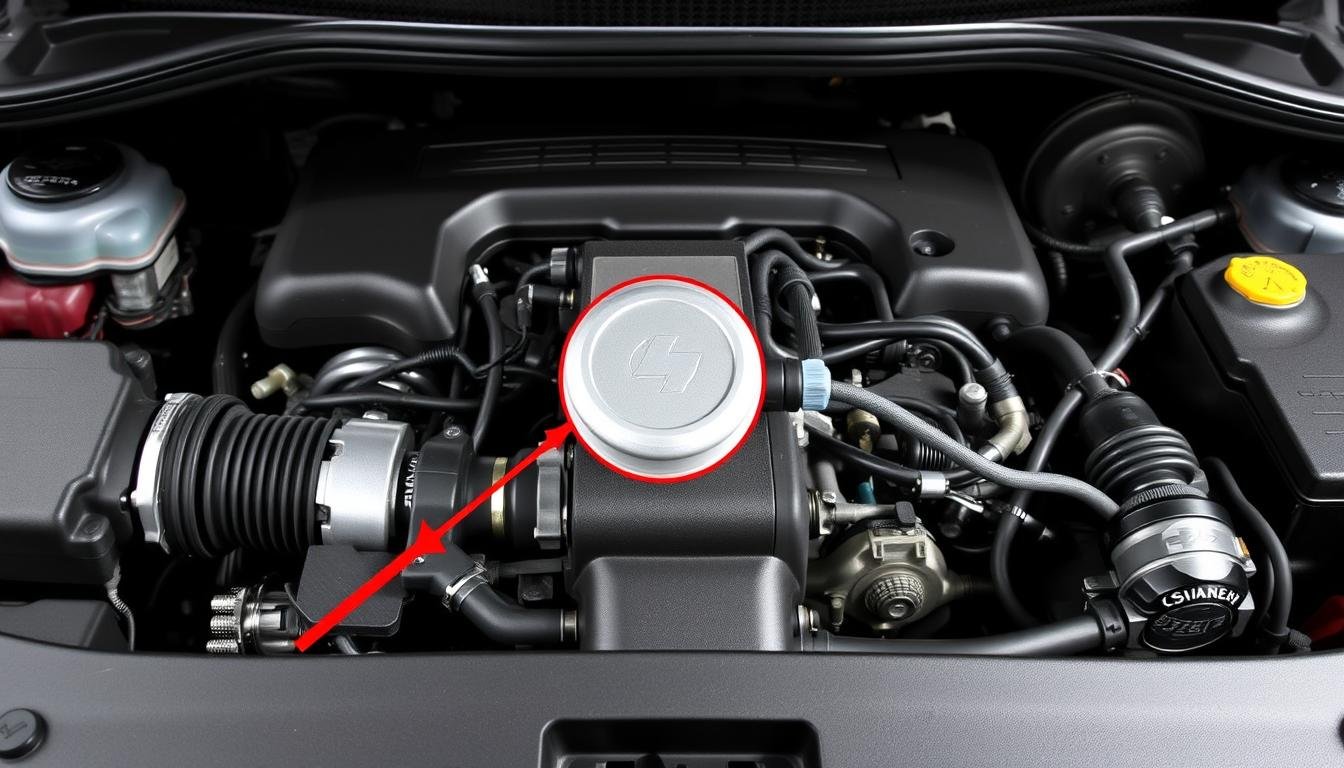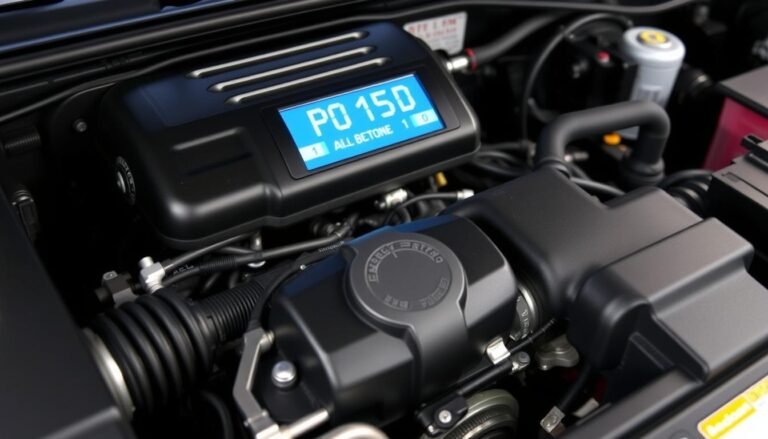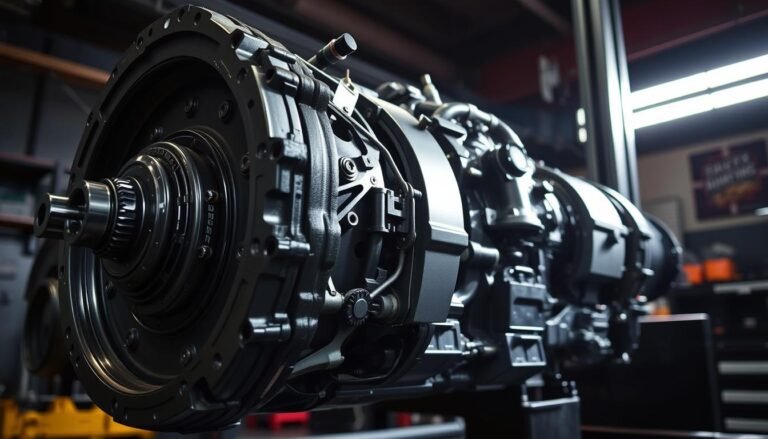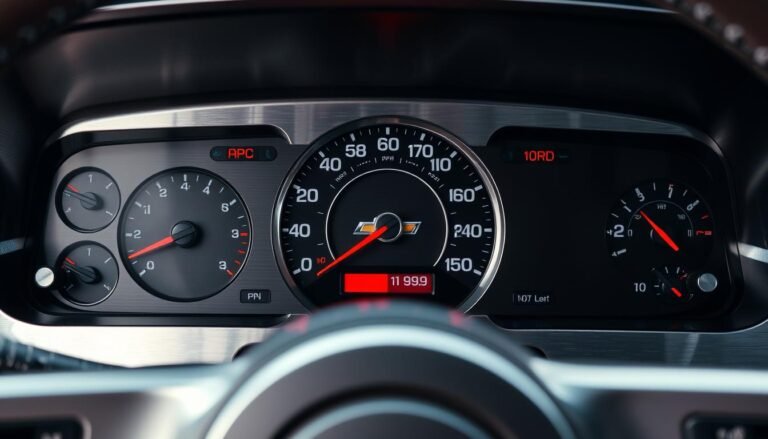Chevy 5.3 Cam Sensor Location Hevy Impala Years To Avoid
The Chevy 5.3 cam sensor location matters a lot for your engine’s health, especially in some Chevy Impalas.
Knowing which Impala years to dodge is vital if you’re buying or already own one. We’ll tell you where the cam sensor sits in different models.
We’ll also guide you on spotting problems and the years to avoid. We’ll look into the cam sensor’s job in managing your engine, signs it may be failing, and how to replace it if necessary.
This info will help you make smart choices about your Chevy Impala’s care and life span. Let’s dig into the Chevy 5.3 cam sensor location and the less dependable years.
What is The Chevy 5.3 Cam Sensor?
The Chevy 5.3 camshaft position sensor is crucial for your vehicle’s engine to run smoothly. It checks the camshaft’s position, affecting fuel injection and ignition timing.
Problems with this sensor can cause major engine issues, impacting how well your car performs. Knowing how it works helps you keep your vehicle in good shape.
What is The Camshaft Position Sensor?
This sensor is an electronic device that monitors the camshaft’s rotation. It sends data to the engine control module (ECM), adjusting fuel injection and ignition timing accordingly.
With a working cam sensor, your engine runs better, saving fuel and enhancing performance. Essentially, it helps your engine work the way it’s supposed to.
Importance of The Cam Sensor in Engine Performance
Learning the cam sensor’s role is critical for car owners. It greatly impacts your engine’s efficiency.
If it fails, you might face bad fuel economy, engine stalling, or trouble starting the car. A faulty chevy 5.3 camshaft position sensor can also trouble the engine management system, disrupting fuel delivery and ignition timing.
Keeping this sensor healthy is key to your vehicle’s long life and dependability.
Chevy 5.3 Cam Sensor Location Hevy Impala Years To Avoid
Knowing where the chevy 5.3 cam sensor is can be key for Chevy Impala owners. It’s usually found on the engine’s front cover.
This is true for Generation IV engines made from 2005 and later. Its location is vital for the engine to work right.
However, not every year model has a well-placed cam sensor. Some years are known for having issues.
These problems could be because of manufacturing mistakes or design flaws. These flaws can affect how well the cam sensor works.
It’s good to know which years these are to avoid expensive repairs or maintenance.
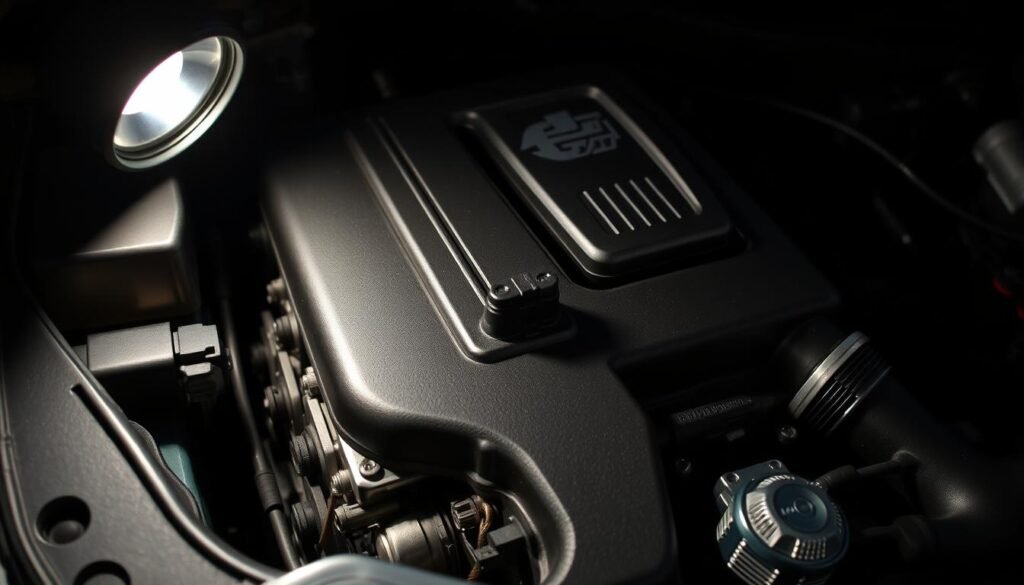
Below is a table detailing the cam sensor location and the problematic model years to avoid:
| Model Year | Cam Sensor Location | Reputation |
|---|---|---|
| 2005 | Front cover | Reliable |
| 2006 | Front cover | Reliable |
| 2007 | Front cover | Reliable |
| 2008 | Front cover | Unreliable |
| 2009 | Front cover | Unreliable |
Knowing the chevy 5.3 cam sensor location is helpful when looking for a good car. Paying attention to the problematic years is smart.
It helps you keep your Chevy Impala in good shape. By knowing where the cam sensor is and its reliability, you can plan better for car care.
Signs of a Failing Camshaft Position Sensor
A failing camshaft position sensor can really mess with your vehicle’s engine. It’s key to spot these signs early. This lets you take action before the damage gets worse.
Common Symptoms To Look Out For
- Illuminated check engine light
- Engine stalling or misfiring
- Difficulty starting the engine
- Rough idling when the engine is running
- Reduced fuel efficiency
How a Bad Sensor Affects Engine Performance?
When a camshaft position sensor goes bad, it’s not only about the warning lights. It messes up how the engine runs, making your car slow to accelerate and low on power.
Knowing these effects helps you address the issue before it leads to big repair bills.

Identifying Problematic Chevy Impala Models
Some Chevy Impala years have big issues, mainly with the camshaft position sensor. Knowing which models to avoid can protect you from expensive repairs.
Certain years and trims have more notable flaws in design and performance.
Overview of Unreliable Years
The years 2004 to 2006 are known for problems in Chevy Impala models. These years had many reports of engine issues because of the cam sensor.
Being aware of these years can guide you in buying or keeping a Chevy Impala.
Specific Models To Steer Clear Of
- 2004 Chevy Impala – Commonly affected by engine stalling and sensor failure.
- 2005 Chevy Impala – Known for engine misfires linked to cam sensor inaccuracies.
- 2006 Chevy Impala – Reports of electrical issues and decreased engine responsiveness.

Replacing The Chevy 5.3 Camshaft Position Sensor
It’s important to replace the camshaft position sensor in your Chevy 5.3 for top engine performance.
This task needs careful steps and attention. Here’s a guide to help you replace the chevy 5.3 camshaft position sensor without trouble.
Step-by-Step Replacement Guide
- Start by disconnecting the negative battery terminal to prevent electrical shorts.
- Remove any parts or components blocking access to the camshaft position sensor.
- Carefully detach the faulty sensor from its connector and housing.
- Install the new sensor, ensuring it is properly seated in its position.
- Reconnect the wiring and any parts removed during disassembly.
- Reconnect the negative battery terminal and start the engine to check for proper function.
Choosing The Right Replacement Parts
Picking the right parts for your camshaft sensor is key for lasting performance. Look for quality parts to avoid future issues.
Always choose OEM parts for a perfect fit and reliable function. Here are tips for picking the best parts:
- Check compatibility with your specific Chevy 5.3 model.
- Read reviews and ratings to assess reliability and performance.
- Compare prices across different suppliers for the best value.
- Look for suppliers that offer warranties or guarantees on their parts.
| Part Type | OEM Brand | Price Range | Warranty |
|---|---|---|---|
| Camshaft Position Sensor | ACDelco | $40 – $60 | 1 Year |
| Camshaft Position Sensor | Delphi | $35 – $55 | 2 Years |
| Camshaft Position Sensor | Standard Motor Products | $30 – $50 | 1 Year |
Known Issues with Chevy Impala
The Chevy Impala often faces issues, especially with sensors that affect how the engine works.
Owners have found big problems which make the car less reliable. Knowing about these issues can help you fix them early and more easily.
Common Problems Reported by Owners
Engine stalling, rough idling, and bad acceleration are common complaints. These problems are mainly due to sensor failures, like the mass air flow (MAF) and crankshaft position sensors.
When engines stall suddenly, the car might need to cool down before it starts again. These issues usually start at around 145,473 miles.
However, they can appear as early as 12,000 miles or as late as 300,000 miles.
| Component | Symptoms of Failure | Replacement Cost |
|---|---|---|
| Mass Air Flow (MAF) Sensor | Engine stalling, rough idling, poor acceleration | $209 – $294 |
| Crankshaft Position Sensor | Intermittent stalling, ignition issues | $146 – $188 |
How Sensor Issues Are Related To Broader Problems?
A bad camshaft position sensor can make these problems worse. It messes up the engine control module (ECM), which controls fuel injection and ignition timing.
This can cause hard starting, a lit-up check engine light, engine misfires, and failure in emissions tests.
Fixing these sensors quickly is key to keeping your Chevy Impala running well.
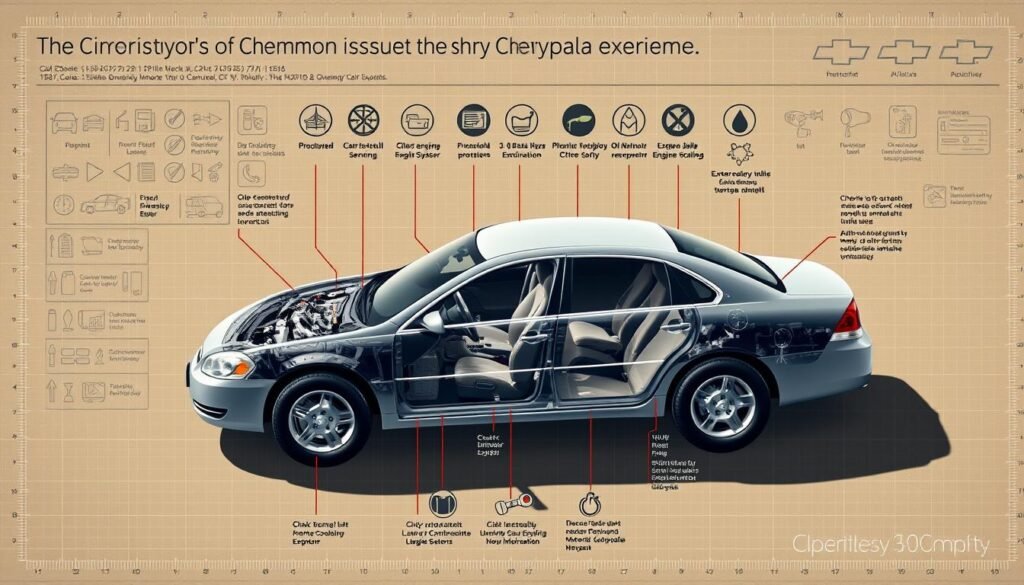
Troubleshooting Chevy 5.3 Cam Sensor Issues
When fixing cam sensor issues on your Chevy 5.3, start by following a step-by-step plan. Understand the common signs and read the error codes.
This approach helps figure out if the issue is with the camshaft sensor or its wiring.
Diagnostic Procedures To Follow
Use an OBD-II scanner to find any cam sensor trouble codes. Codes like P0340 or P0341 show there’s a sensor problem.
Then, check the wiring and connector for damage. A visual check often spots problems causing sensor failure.
Tools Needed For Troubleshooting
You’ll need specific tools to troubleshoot cam sensor problems:
- OBD-II scanner
- Multimeter for resistance testing
- Basic hand tools (screwdrivers, pliers, etc.)
- Wire brush for cleaning connections
Having these tools ready makes troubleshooting easier and helps pinpoint issues.
| Diagnostic Step | Tool Required | Description |
|---|---|---|
| Read Error Codes | OBD-II Scanner | Connect and scan for trouble codes related to the cam sensor. |
| Inspect Wiring | Screwdriver | Check connectors and wiring for damage or corrosion. |
| Test Sensor Resistance | Multimeter | Measure resistance across the cam sensor terminals to ensure they are within specifications. |
| Clean Connections | Wire Brush | Remove corrosion from connectors to improve electrical contact. |
Recommended Cam Sensor Location For Chevy 5.3
The camshaft position sensor’s placement is very important for your Chevy 5.3 engine. It’s best placed at the engine’s front cover for the Gen IV Chevy 5.3 models.
This spot allows for the most accurate engine timing and operation.
Ideal Placement For Optimal Performance
Putting the cam sensor in the right spot can make your engine run better and reduce failure risks.
By placing it on the front cover, it gets perfect feedback from the camshaft. This leads to a more reliable performance.
Differences in Sensor Locations Across Years
Different Chevy 5.3 models and years place the sensor in various spots. Early models might have it in different locations, which could make installing it harder.
Knowing where the sensor goes for each model is helpful. It keeps your engine running well and improves performance.
| Model Year | Recommended Cam Sensor Location | Notes |
|---|---|---|
| 2007-2013 | Front cover | Best for accurate readings |
| 2000-2006 | Rear of engine block | Varies based on specific model |
| 1999 and earlier | Front left of engine | Older designs may vary |
Knowing Cam Sensor Part Numbers
Each cam position sensor has a unique part number. This matches it to certain cars and years.
The part number for the chevy 5.3 cam sensor, for instance, is crucial for its correct working.
Choosing the right part number is key. Different designs mean sensors that look the same might not work the same.
Importance of Using The Correct Part Number
Choosing the right cam sensor part number keeps your engine running smoothly. The wrong sensor could cause issues and make your engine slow to respond.
Sensors not made for your car might not read correctly, hurting your engine’s health. Always check the part number carefully before buying.
Where To Find Genuine Parts?
It’s easy to find genuine parts if you know where to look. Trusted sources for the chevy 5.3 cam sensor part number are authorized dealers and online stores that sell OEM parts.
These parts match the quality expected by the car’s maker and fit right. Good websites let you check if the part fits before you buy it.
This saves you time and avoids headaches. By making sure the part matches, you protect your car and its reliability.
Enhancing The Reliability of Your Chevy Impala
To keep your Chevy Impala running well, it’s crucial to focus on maintenance. Proper care makes it last longer and work better.
Make sure to regularly check the oil, tires, and filters. This helps avoid sudden problems and boosts the car’s performance. Here are some key practices to follow:
Regular Maintenance Tips
- Oil Changes: Perform oil changes every 3,000 to 5,000 miles for optimal engine function.
- Inspect Brake Systems: Regularly check and maintain brake pads and fluids to ensure safety.
- Battery Maintenance: Keep terminals clean and check for corrosion to avoid starting issues.
- Tire Pressure: Inspect tire pressure monthly to enhance fuel efficiency and handling.
- Fluid Levels: Regularly check coolant, transmission fluid, and brake fluid levels.
Upgrades To Improve Overall Performance
Investing in upgrades can make your Impala perform better. Here are some upgrades to think about:
- High-Performance Air Intake Systems: Enhance engine air flow for better fuel efficiency.
- Suspension Upgrades: Improve handling and ride comfort with upgraded suspension components.
- Performance Exhaust Systems: Increase horsepower and torque while improving sound.
- Engine Tuning: Optimize engine settings for enhanced power and efficiency.
Conclusion
Compromise Chevy 5.3 cam sensor issues is key to keeping your Chevrolet Impala running smoothly. The camshaft position sensor (CMP) is vital for your engine to work right.
It sends important info to the engine control module (ECM), which helps with ignition timing and fuel injection.
Knowing about the cam sensor helps prevent issues like engine stalling, power loss during acceleration, and check engine lights turning on.
Different Impala models have the CMP sensor in different places, so it’s important to know where yours is. If you see a P0343 code, it means there might be a sensor problem.
Fixing issues early can save you from spending a lot of money and from getting frustrated.
Regular checks and repairs keep your Chevy reliable and make driving more fun. Being proactive and informed helps you handle your vehicle’s maintenance better.
This way, you can fully enjoy your Chevy Impala without worrying about cam sensor problems.
FAQs
What is the location of the camshaft position sensor on a Chevy 5.3 engine?
For Gen IV models (2005 and newer), the camshaft position sensor is on the engine’s front cover. If you have an older model, the location might be different. Always check the service manual for the right info.
Which years of Chevy Impala should I avoid due to reliability issues?
Stay away from the Chevy Impala models from 2004-2006. These models have reported issues with the camshaft position sensor and other engine problems.
What are some common symptoms of a failing camshaft position sensor?
If your cam sensor is failing, you might see the check engine light. Your engine could stall, start with difficulty, idle roughly, or use more fuel than normal.
How do I replace the camshaft position sensor on my Chevy 5.3?
First, disconnect the battery’s negative terminal. Then, remove anything blocking access to the sensor. Finally, take out the old sensor and put in the new one, making sure it fits right.
What tools do I need for troubleshooting a cam sensor issue?
You’ll need a few tools. An OBD-II scanner reads error codes. A multimeter checks resistance. You’ll also need some basic tools to reach and inspect the sensor.
How does a bad camshaft position sensor affect engine performance?
A faulty cam sensor messes up the engine’s timing. This can make the engine stall, idle weirdly, and use too much fuel. It might even lead to more engine problems.
Where can I find the correct part number for the camshaft position sensor?
Check your car’s service manual or ask at a dealership. You can also look at trusted online stores that sell OEM (original equipment manufacturer) parts.
What maintenance tips can improve my Chevy Impala’s reliability?
To keep your Impala reliable, do regular sensor checks and oil changes. Diagnose its performance often. Adding a high-performance air intake might help your car run better, too.

